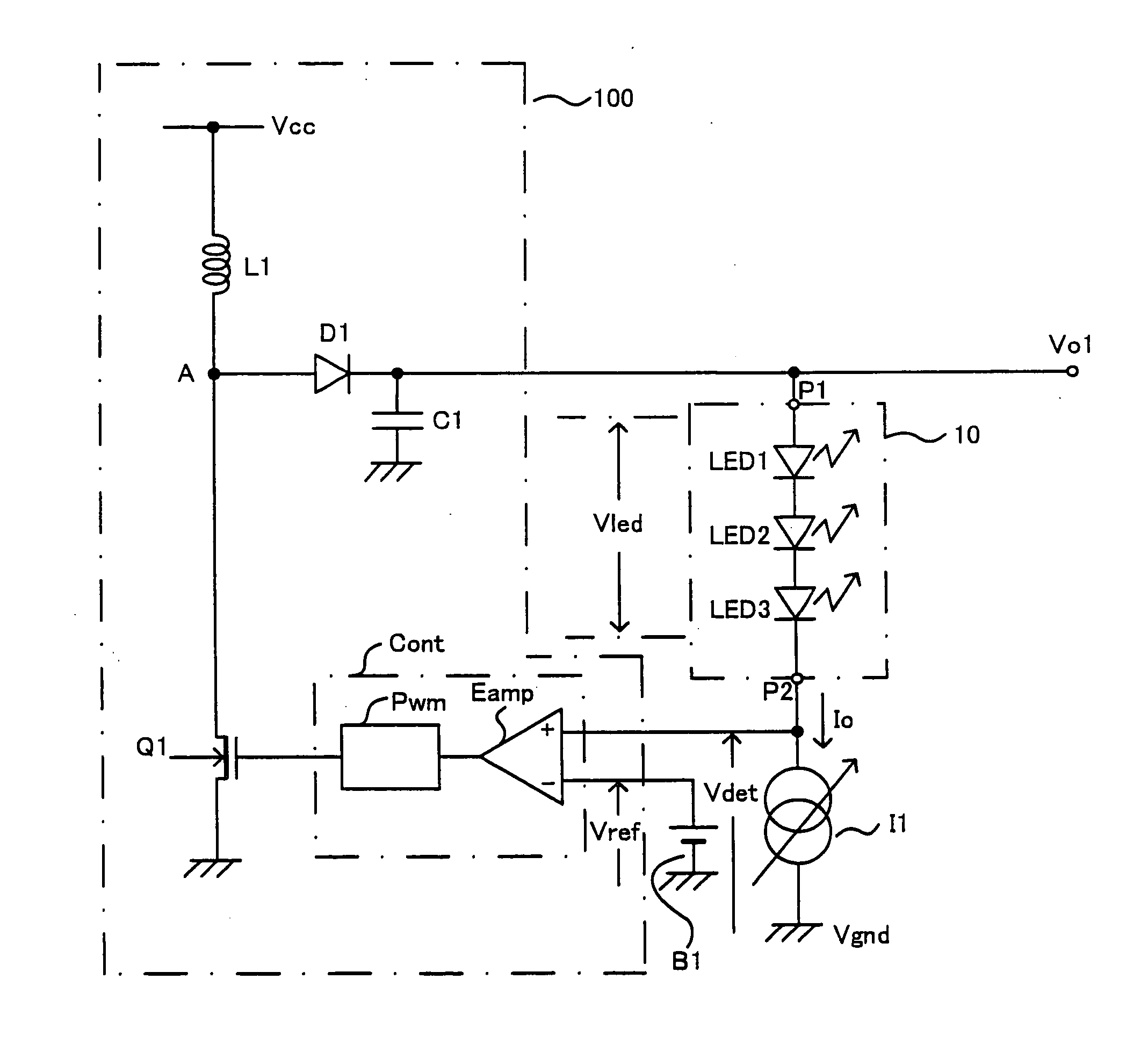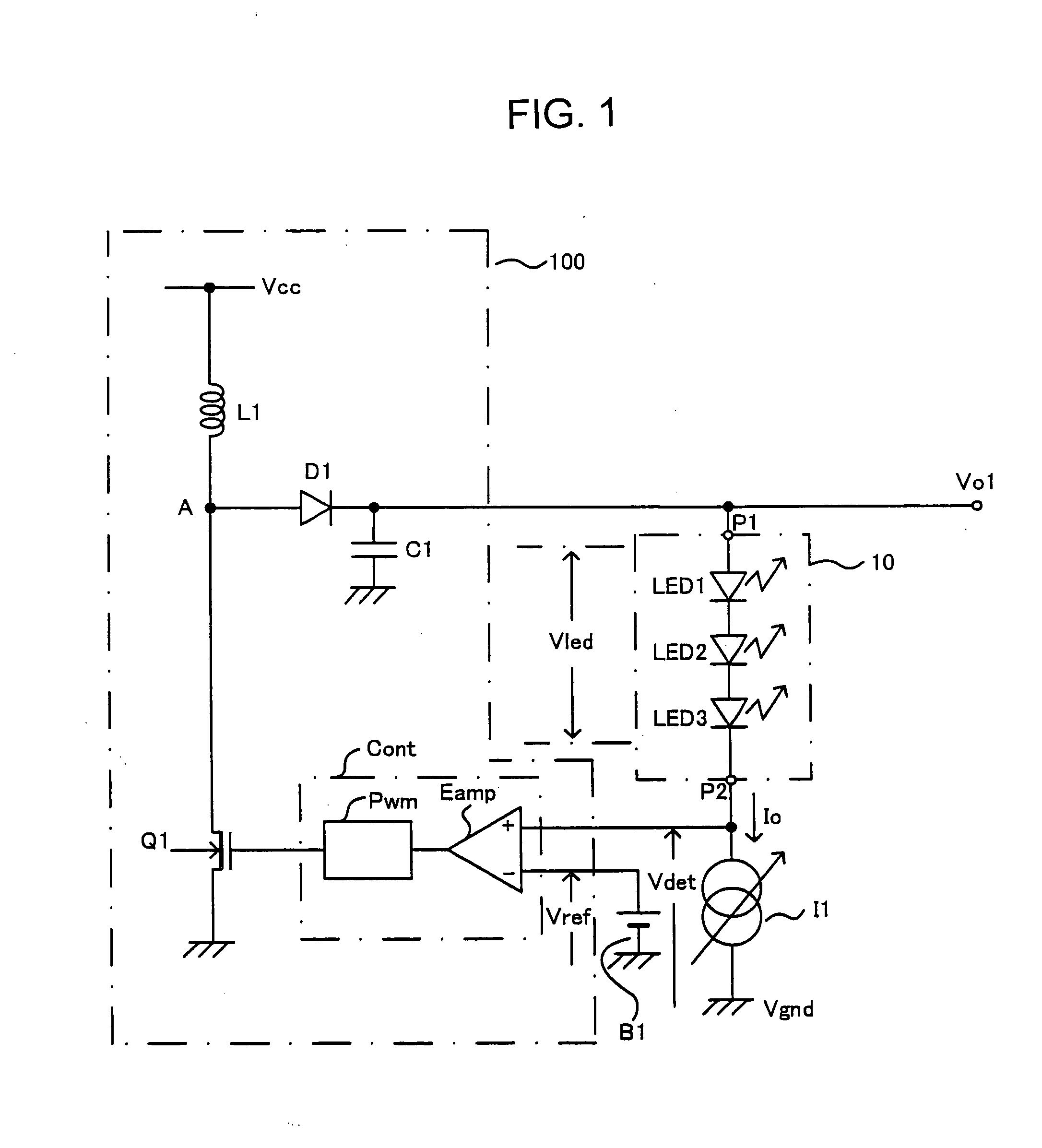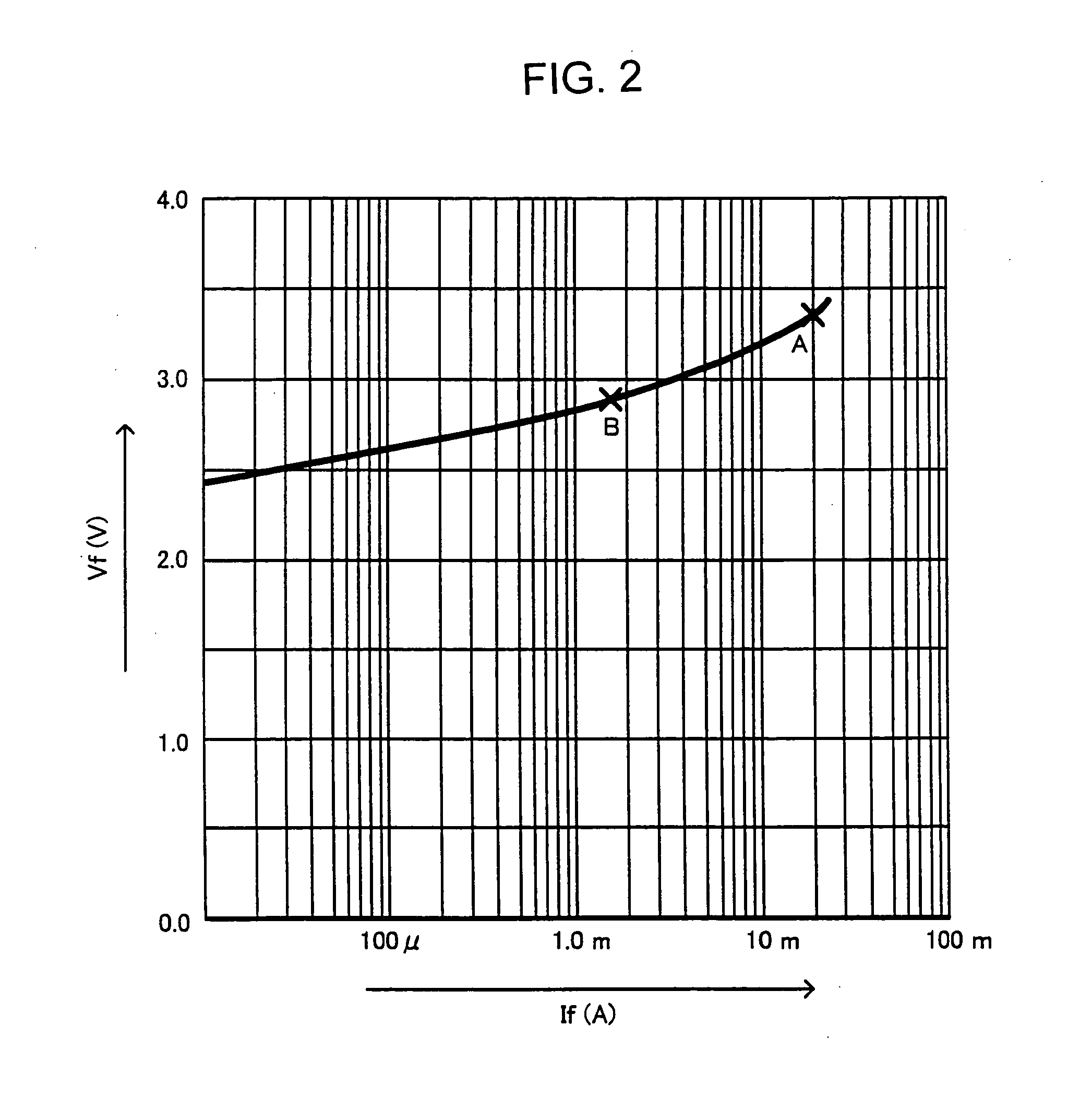Load driving device and portable apparatus utilizing such driving device
a technology of driving device and load, which is applied in the direction of electric variable regulation, process and machine control, instruments, etc., can solve the disadvantages of disadvantageous overall efficiency of electronic devices including increase energy loss, and require additional space and cost for power supply circuits and loads. , to achieve the effect of efficient driving load and avoiding energy loss
- Summary
- Abstract
- Description
- Claims
- Application Information
AI Technical Summary
Benefits of technology
Problems solved by technology
Method used
Image
Examples
second embodiment
[0050]FIG. 5 shows a circuit structure of a load driving device in accordance with the invention. As shown in FIG. 5, the load driving device has a further load 20 in addition to the forgoing load 10. Furthermore, a constant-current source 120 is provided in association with the load 20. It should be understood that more than two loads can be added.
[0051] In the arrangement shown in FIG. 5, a constant-current source I10 is connected in series with the load 10, through which flows a drive current Io1. The voltage drop across the constant-current source I10 is utilized as a first detection voltage Vdet1. Similarly, a constant-current source I20 is connected in series with the load 20, through which flows a drive current Io2. The voltage drop across the constant-current source I20 is used as the second detection voltage Vdet2. Symbols P11, P12, P21, and P22 indicate terminals for connection with the loads.
first embodiment
[0052] An error amplifier Eamp of the control circuit Cont has two non-inverting input terminals (+) and one inverting input terminal (−). The two non-inverting input terminals (+) are fed with a first detection voltage Vdet1 and a second detection voltage Vdet2, one for each terminal, while the inverting input terminal (−) is fed with the reference voltage Vref. In the error amplifier Eamp, the lower one of the first detection voltage Vdet1 and the second detection voltage Vdet2 is compared with the reference voltage Vref. Rest of the circuit structure is the same as that of the first embodiment shown in FIG. 1.
[0053] The load driving device of FIG. 5 can adjust the individual drive currents Io1 and Io2 independently. The lower one of the voltage drops Vdet1 and Vdet2 of the constant-current sources I10 and I20, respectively, is automatically selected in the controlled switching operation performed by the power supply circuit 100, thereby securing operations of the constant-current...
third embodiment
[0055]FIG. 6 shows a circuit structure of a load driving device in accordance with the invention. As seen in FIG. 6, the switching power supply circuit 100 has the same configuration as the one shown in FIG. 1.
[0056] In the third embodiment, connected in series between a node providing an output voltage Vo and the ground are a first external load (referred to as first load) 10 driven by a predetermined constant current, a variable-resistance means in the form of N-type transistor Q2 having variable resistance in response to a control signal, and a resistor R1 serving as a current detection means. The first load 10 is a load having an operating point that depends on the magnitude of the current flowing through it. In this example, the load 10 is provided with the drive current Io of a predetermined magnitude. The voltage drop across the resistor R1 is used as the first detection voltage Vdet1.
[0057] The control circuit Cont is fed with the first detection voltage Vdet1 along with a ...
PUM
 Login to View More
Login to View More Abstract
Description
Claims
Application Information
 Login to View More
Login to View More - R&D
- Intellectual Property
- Life Sciences
- Materials
- Tech Scout
- Unparalleled Data Quality
- Higher Quality Content
- 60% Fewer Hallucinations
Browse by: Latest US Patents, China's latest patents, Technical Efficacy Thesaurus, Application Domain, Technology Topic, Popular Technical Reports.
© 2025 PatSnap. All rights reserved.Legal|Privacy policy|Modern Slavery Act Transparency Statement|Sitemap|About US| Contact US: help@patsnap.com



